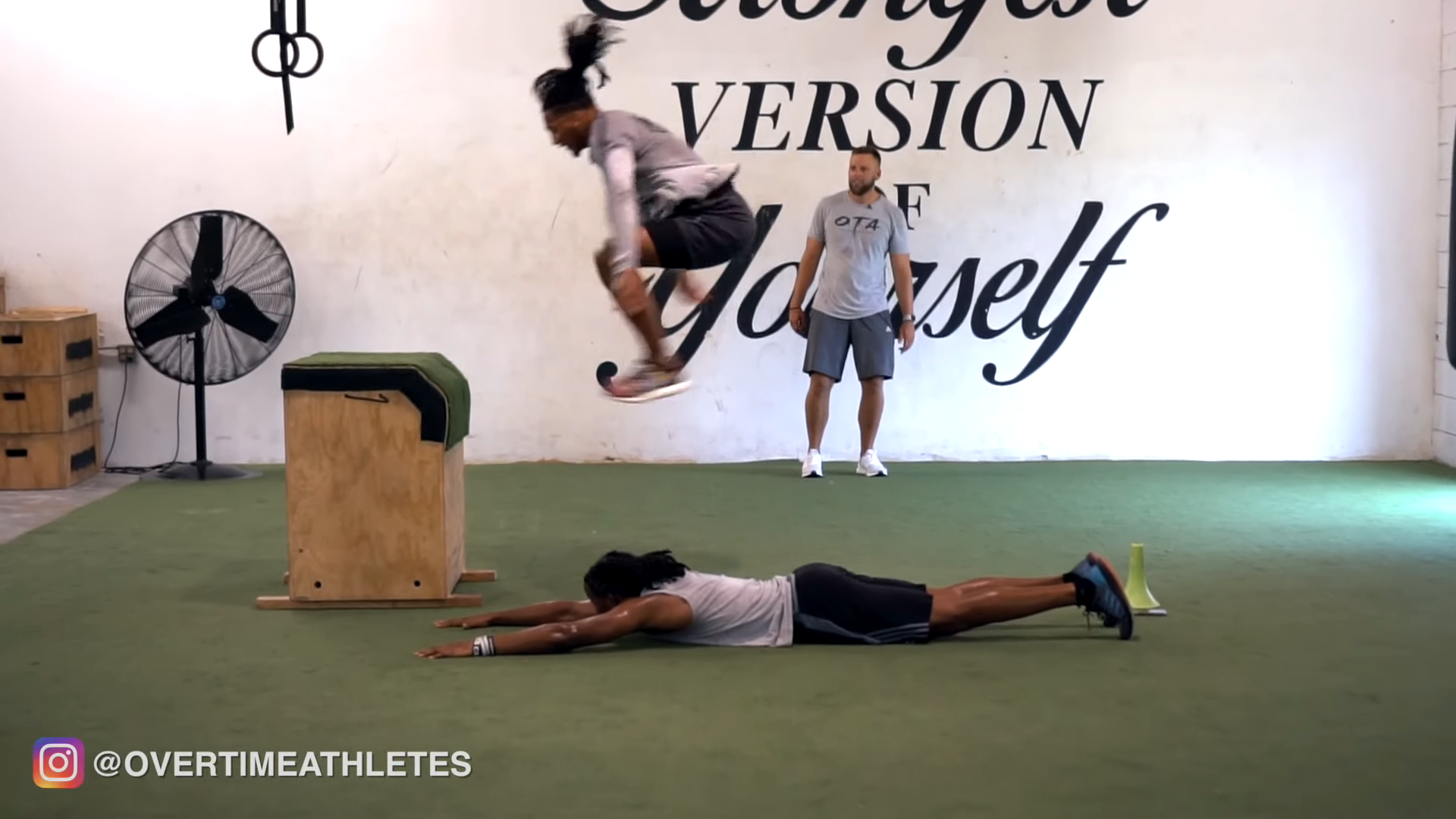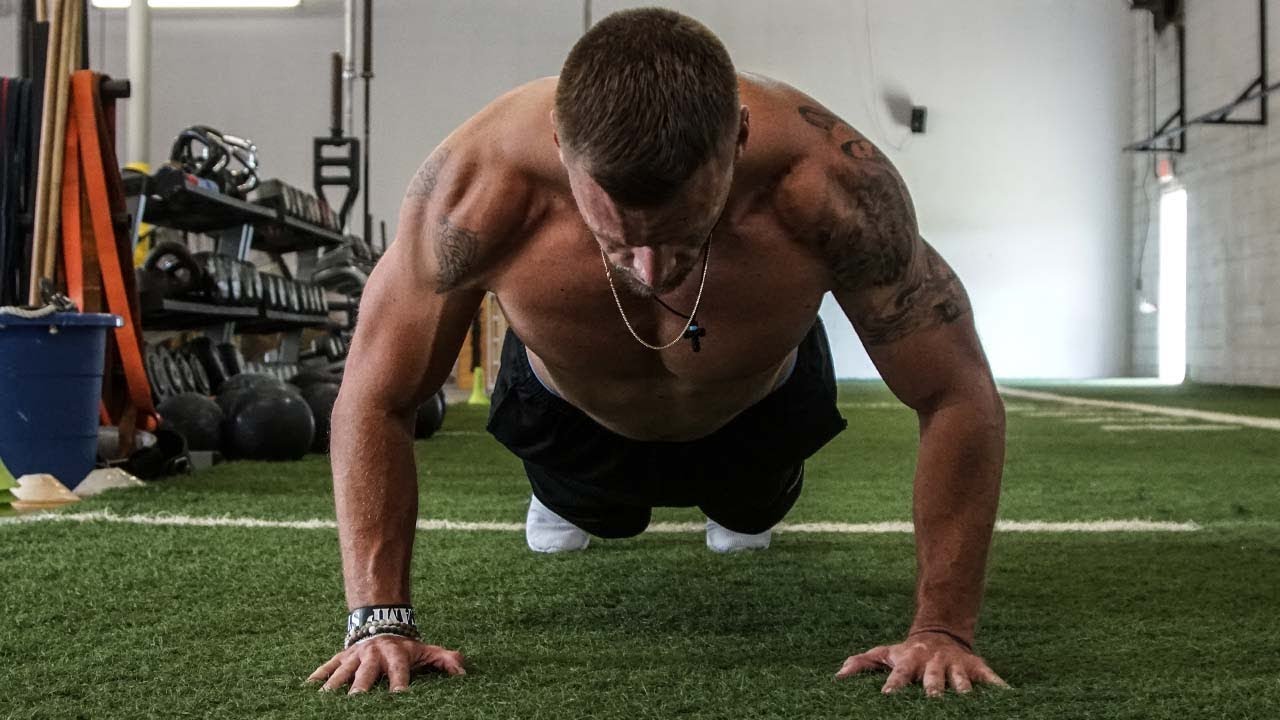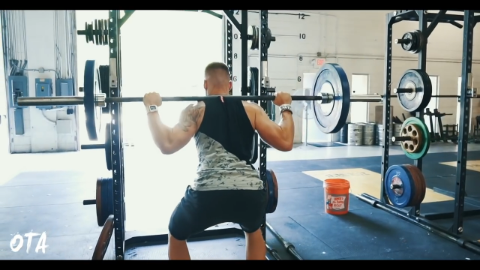How to Bulk Up for Athletes – Easy Tips to Bulk Up EFFECTIVELY
Many experts out there try to make bulking for athletes seem like an overly complicated process. In truth, bulking as an athlete is only slightly harder than bulking as a bodybuilder or lifting enthusiast.

However, the mass of athletes make one of two mistakes. They either:
- Eat too little and complain that they’re still skinny
- Eat too much and pile on too much fat
Both mistakes can be insanely detrimental to an athlete’s performance. These mistakes can mangle an athlete’s muscle building hormones, make him chronically fatigued, expose him to constant stress-induced inflammation, and more.
But, when you do it right (and it’s simple to do it right), you can gain lean muscle mass without adding too much fat. And you’ll be able to do it in the quickest, most efficient way possible.

Recently, I teamed up with an expert nutritionist. His name is Jake Gottesman. He has his Masters in Nutrition and Exercise Science, along with a long series of other accolades you can read about here.
Recently, I asked him to share some guidelines on bulking for athletes.
Below, I’m going to share the tips he shared with me, so you can avoid the bulking pitfalls of other athletes.
The Best Time for An Athlete to Bulk Up
If you’re a serious athlete who’s competing regularly, there is a best time to bulk. The best time for an athlete to bulk up is at the beginning of their offseason.
Reason is, during the season, an athlete becomes detrained. They lose muscle, their explosiveness dips, they lose strength, and more. Basically, the rigors of the season drain their body.

Again, this is normal, and hard to avoid.
That said, the best time to go into a bulking phase that encourages muscle growth and strength gains is the beginning of the offseason. This way, you can add muscle and strength, then as the offseason progresses, you can slowly shed the fat you may have accumulated during your bulk. This allows you to head into your season lean, chiseled, and quick.
How to Bulk – Caloric Surplus
An athlete has to be in a caloric surplus to bulk. This means that you have to consume more calories than your baseline requirements (for help finding your baseline requirements, read this blog post). To some, this is obvious, but it seems like a lot of athletes struggle with this concept. I say this because a lot of athletes will say they’re bulking, but they’ll stay skinny for the entirety of their “bulk“.

It’s important to note that being in a caloric surplus does not mean eating everything in sight.
It takes a careful, calculated approach for a successful bulk – one that limits fat gain and encourages lean mass gain.
When Jake assigns a caloric surplus to an athlete, he likes to look at the body type of the athlete. If the athlete has a tendency to hold a little bit more body fat, or is already at a high body fat percentage, Jake will take a conservative approach. Somewhere around 300 calories.

However, if there’s an athlete who has six-pack abs year round, and we’ve never seen a pound of body fat on him, Jake will take a more aggressive approach. An aggressive caloric surplus will be in the ballpark of 500 calories.
One thing to keep in mind is that a pound is equal to 3,500 calories. So, if you’re in a caloric surplus of 500 calories, you’ll see a pound of weight gain in seven days. If you don’t see this regular weight gain, it means your metabolism is rising, or you’re performing more activity, and you have to adjust your calories to account for this.
Macronutrient Ratio
The next thing a bulking athlete needs to keep in mind is their macronutrient ratio. This is the amount of carbs, fats, and proteins they’re taking in each day. In my other post, I shared the ideal macronutrient ratio. That macronutrient ratio is not set in stone, and one of the times you would change it is when you’re bulking up.

When you’re bulking, you may want to raise your carbohydrate intake and lower your protein intake. This is because when you’re bulking, you’re putting your body in an anabolic state. Your body isn’t looking to burn fat, it’s looking to add muscle, so protein becomes less necessary.
When you add carbohydrates, you’re providing your body with more energy to train hard, lift heavier weights, and stay energized.
Meal Frequency
Another variable an athlete will want to manage when he is bulking is their meal frequency.
As a general rule, an athlete should stick to five meals a day.
The reason? Muscle protein synthesis.

Muscle protein synthesis is the body using protein to repair muscle damage caused by weight training. As an athlete, you want muscle protein synthesis to be continuously stimulated throughout the day. And you can do that with regular meals.
And meal frequency is even more important when bulking.
Take two athletes who need to eat 120 grams of protein a day. One eats all 120 grams in one meal, the other eats 120 grams through five meals. The athlete who eats 120 grams through five meals will build more muscle and have less fat accumulation than the one meal athlete.
And obviously an athlete’s goal in bulking is minimizing fat loss and maximizing muscle gain. Higher meal frequency will help you achieve this.
Experience
The last factor in how you bulk is experience.
An athlete who’s never lifted before, and an athlete who’s been lifting for years will have to follow different guidelines to bulk.

Athletes with little lifting experience can be in a caloric deficit and still gain muscle. However, if they nail down their nutrition, they can amplify their gains.
On the other hand, athletes who have ample experience lifting will need to fine tune their bulking. They may need to manipulate their protein intake more, or may need more calories to have a successful bulk.
Bulking Tips for Athletes
To recap everything above, I’m going to lay them out here.
Here is how to bulk up as an athlete:
- Bulk at the right time – the beginning of the offseason is most optimal
- Get in a caloric surplus. Depending on your body type add 300-500 calories
- Manipulate your macronutrients – up your carbohydrate intake, lower your protein intake
- Eat five meals a day to stimulate muscle protein synthesis
- Adjust your bulking parameters based on your experience level
For more bulking tips, and to learn how to create nutrition parameters adjusted to your unique needs, check out Performance Nutrition. It’s the complete guide to eating for athletes.
To read more about it, head over to the link below:
Click Here to Learn How to Get a Handle On Your Nutrition – Complete Guide to Eating For Athletes
